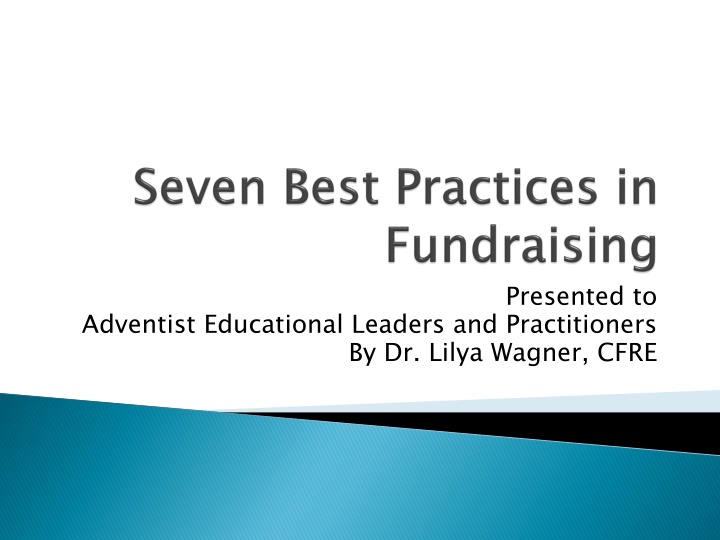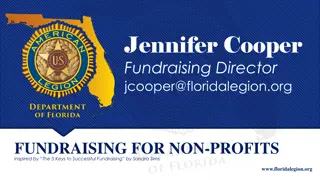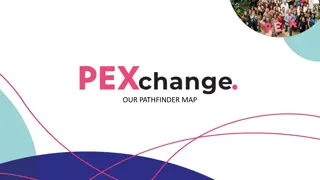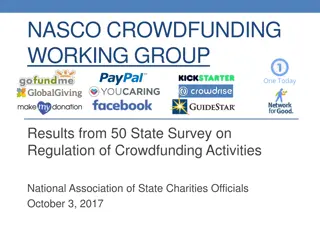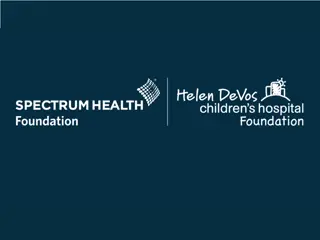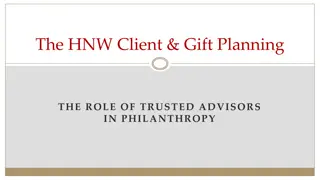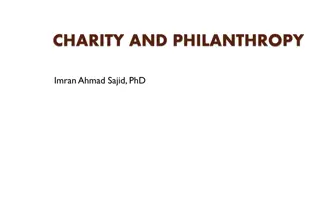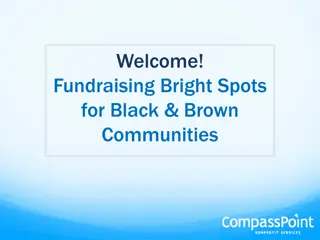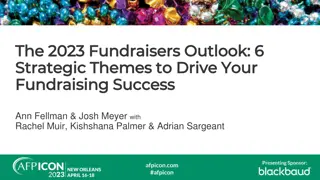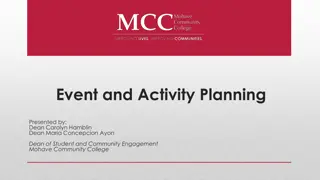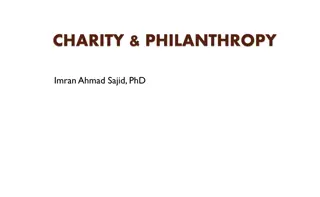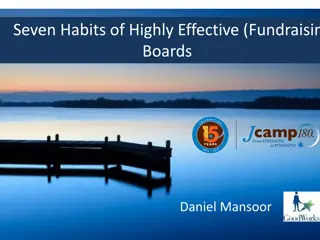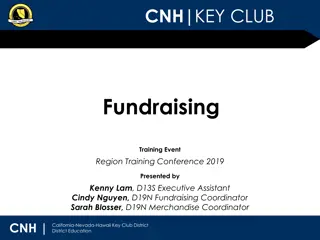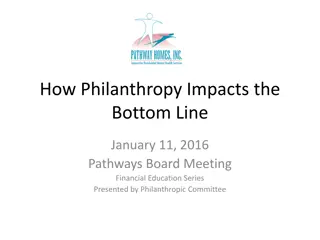Philanthropy and Fundraising Insights for Educational Leaders
Presented to Adventist Educational Leaders and Practitioners, this content delves into the world of philanthropy and fundraising. Discover who gives and why, how to make a compelling case for your cause, and the tools essential for successful fundraising efforts. Explore the mutual benefits of philanthropy, understand the sources and motivations for giving, and learn about the importance of accountability, management, and clear communication in fundraising endeavors. Gain insights into various sources of funding, team coordination in fundraising, and the essential elements of a successful fundraising process.
Download Presentation

Please find below an Image/Link to download the presentation.
The content on the website is provided AS IS for your information and personal use only. It may not be sold, licensed, or shared on other websites without obtaining consent from the author.If you encounter any issues during the download, it is possible that the publisher has removed the file from their server.
You are allowed to download the files provided on this website for personal or commercial use, subject to the condition that they are used lawfully. All files are the property of their respective owners.
The content on the website is provided AS IS for your information and personal use only. It may not be sold, licensed, or shared on other websites without obtaining consent from the author.
E N D
Presentation Transcript
Presented to Adventist Educational Leaders and Practitioners By Dr. Lilya Wagner, CFRE
Who gives and for what? Understand your sources and motivations for giving. Who should be asking for funds? How do you make a case for your cause? What is the current environment for philanthropy? What tools work best for fundraising? What are the mutual benefits of philanthropy to the organization and to the donor? Why should there be a plan? 1. 2. 3. 4. 5. 6. 7.
Fundraising is a process approach to managing resources human and financial. Fundraising is a team coordinated effort, if it is successful. Fundraising requires investment resources time, money, commitment, and staff. Fundraising requires accountability, management, organized efforts, clear communication, and excellent customer service. Fundraising takes time. process, an organized team effort, and a investment of accountability, good
Understanding your sources and motivations for giving.
Foundations (what kinds and where located?) Business (all kinds) Associations Churches Governments INDIVIDUALS! Other?
Communities of participation association Frameworks of consciousness identification with cause Invitation to participate Asked to give Discretionary resources Accepted capacity Models/experiences from youth Positive examples Intrinsic and extrinsic rewards Positive outcomes Urgency and effectiveness Philanthropy meeting needs Demographic characteristics Circumstances affecting giving Material adapted from research by Paul G. Schervish. For further explanation see www.bc.edu/research/swri.
Team versus solo performance. Appropriate roles for leaders.
What problem are you trying to solve, or what need are you attempting to meet? What outcomes can the donor expect? Why is this important to accomplish (values). How will you do it, and other details? A case should answer the question So what?! What difference will it make if a donor gives?
Giving statistics. Church member giving. Effect of the economy. What impacts giving?
Mail (personal, impersonal, mass) Telephone (personal, phonathons, telemarketing) Events (various types and purposes) Proposals and other written requests. The Internet The face-to-face request Fees for service, products, other legitimate income-producing activities.
Reasons for planning. Types of plans. Side benefits of plans. Who is involved in planning.
Fundraising is ministry. It is following the example of Jesus, of following God s advice and request that we be generous. When we do fundraising, we are able to help people be generous and follow Biblical advice. Fundraising is a thoughtful, careful process that involves and investment of resources, time, a team, and best practices. Fundraising is more successful when it is seen as a creation of opportunities, not plugging the hole in the dam.
There is strong leadership at the leadership and lay levels. There is a supportive infrastructure. There is good communication with all constituents. There is an understanding that it takes money to raise money, while at the same time there is accountability and attention to efficiency and effectiveness measures.
If not, what will happen? How much better can we do? What else do we need to or want to do? Contingency plans the what-if lessons. Consideration of all side-benefits. Keeping up in challenging times!
Lack of coordination. Risk of alienating donors when process isn t clear. Perception of no-need. Not enough resources invested. Not an organized effort. Haphazard and not focused. Other?
The right person asking The right prospect For the right cause In the right way For the right amount At the right time From The Fund Raising School
ITS NOT IT S NOT ABOUT THE MONEY ABOUT THE MONEY IT S ABOUT IT S ABOUT GOOD CAUSES GOOD CAUSES THAT HAVE A PRICE TAG THAT HAVE A PRICE TAG
